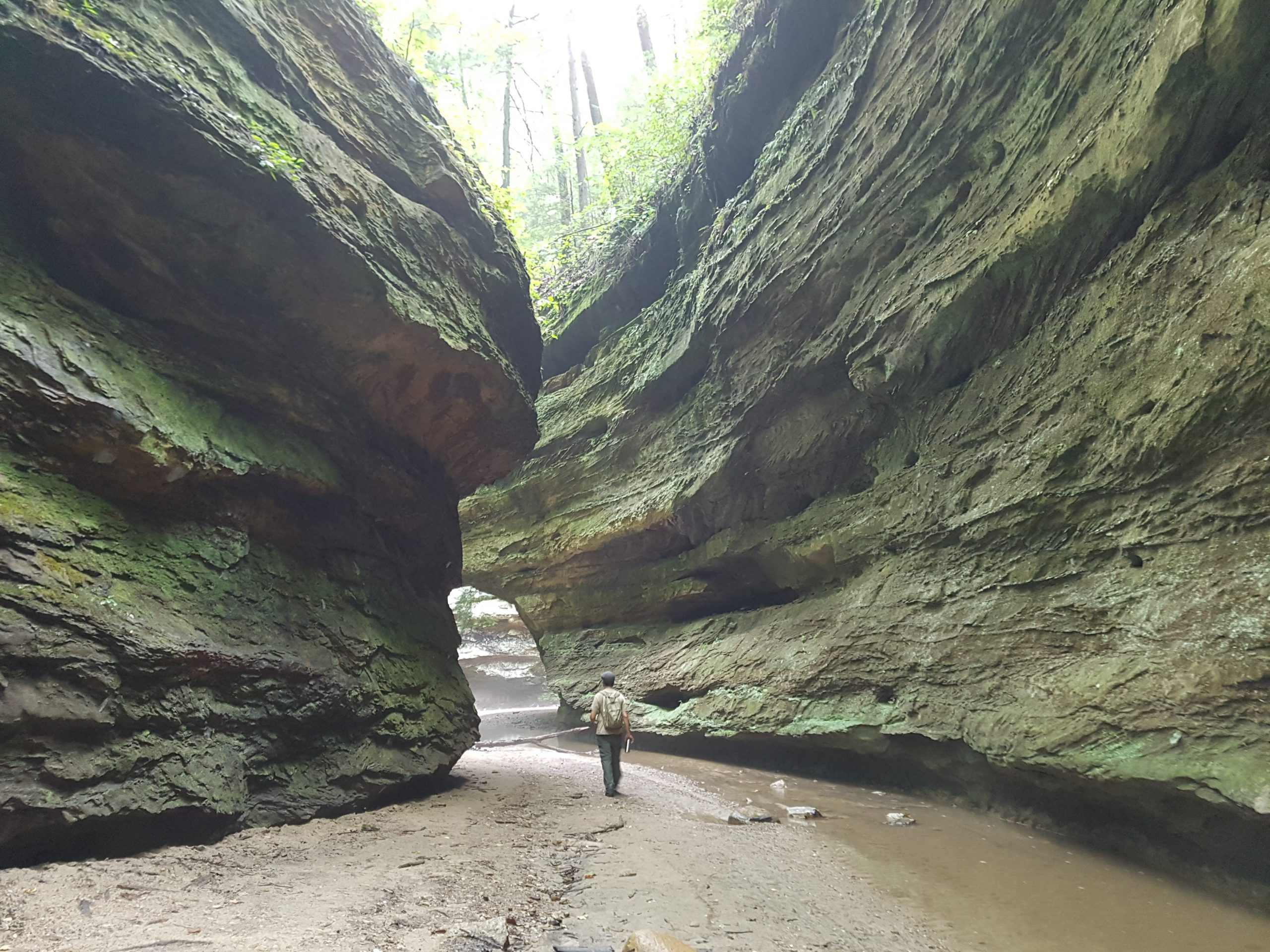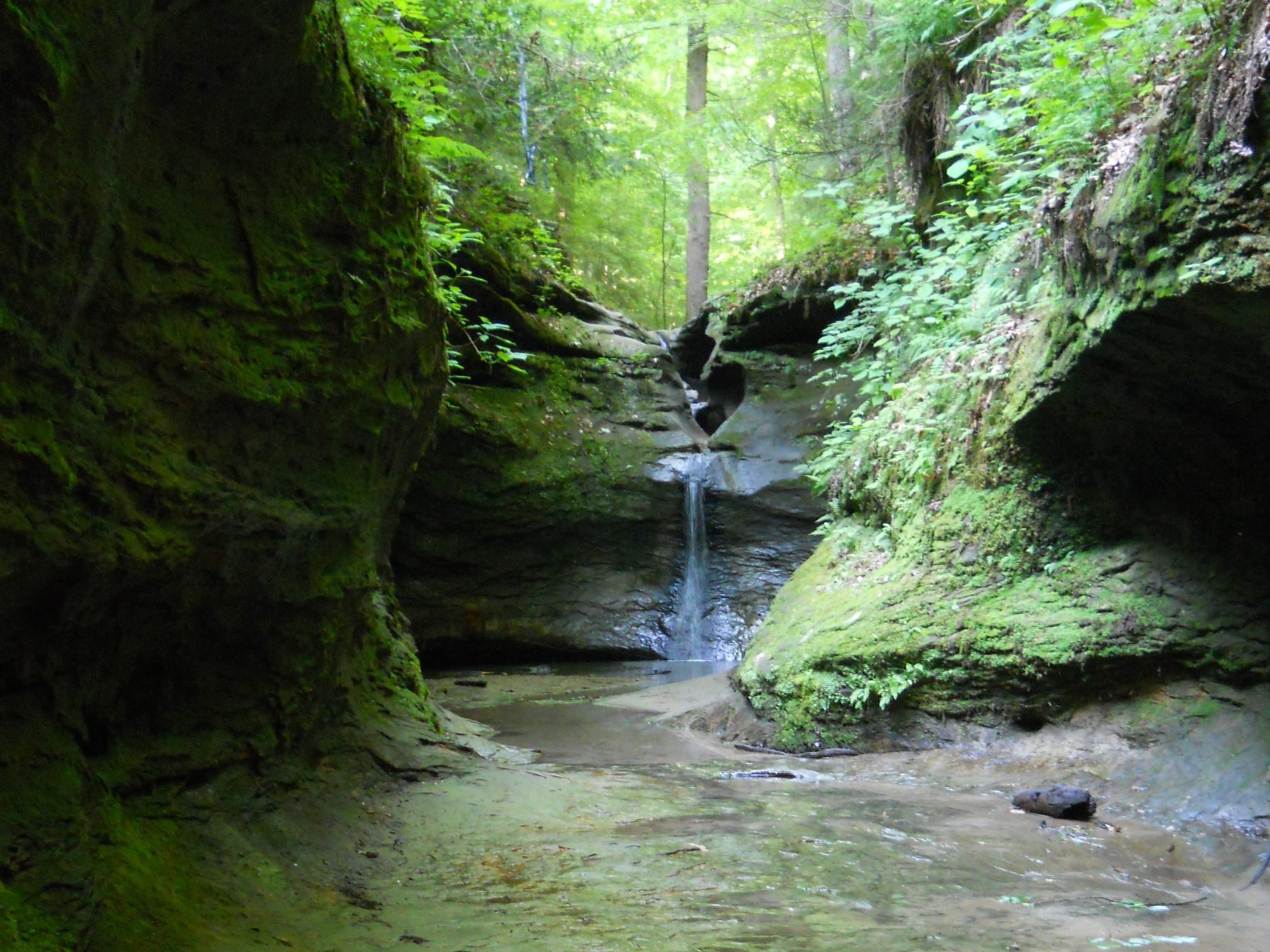Geology
Turkey Run State Park
Indiana isn’t all flat farmland. Turkey Run State Park is home to some truly unique landscapes that highlight Indiana’s prehistoric past.
Turkey Run State Park Geology
In terms of history, the geology of Turkey Run State Park offers a unique view into the past. A walk into one of the ravines takes the visitor on a trip through time when the sandstone gorges represent 600 to 300 million years of nature’s handiwork.
The exposed bedrock is Mansfield sandstone, after Mansfield, Indiana. This deposit was formed during the Carboniferous Period when the buildup of sand at the mouth of the ancient Michigan River was slowly compacted an cemented into solid rock. The swampy environment of this period gave birth to vast coal deposits. Coal was mined here in the late 1800’s and early 1900’s. Seams of coal are still visible along many of the trails.


Recent Turkey Run State Park Geology
More recently, during the Pleistocene Epoch, the sandstone bedrock was carved into today’s familiar canyons and formations by the eroding action of glacial meltwaters. The Punch Bowl on Trail 3 is an example of a pothole that was scoured out by glacial erratics caught in swirling backwash. Erratics are pieces of bedrock from Canada that were carried here by the glaciers. Some of the larger erratics, or boulders, can still be seen in Boulder Canyon on Trail 9, and smaller ones, pebbles, in Sugar Creek.
In the last few hundred years, the wind and water erosion of the sandstone has continued at a slower pace. The gorges are very similar to what was seen by Native Americans and pioneers.
Interested in other State Parks?
Click here for a great Indiana State Parks Guide.
